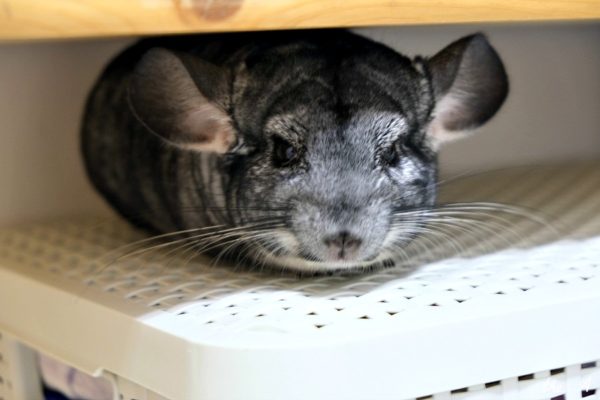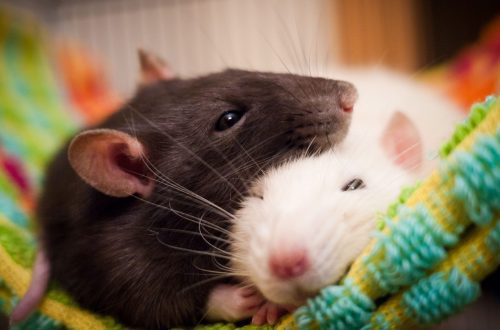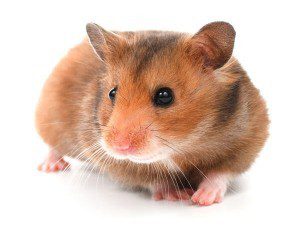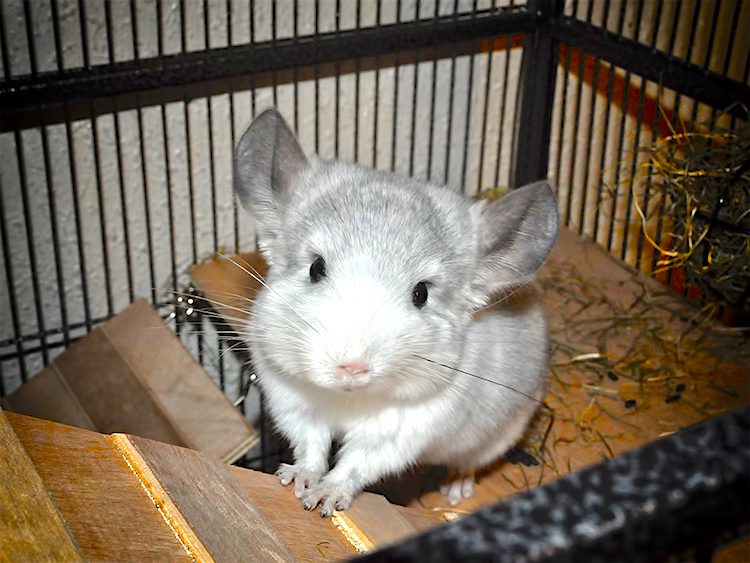
Chinchilla: fikarakarana sy fikojakojana ao an-trano
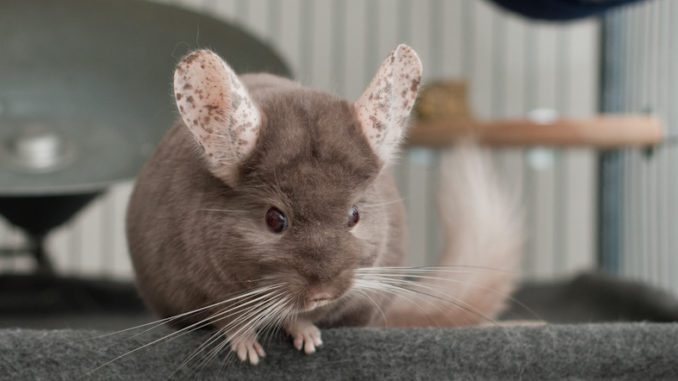
Pet store sellers assure those who want to buy a chinchilla that these cute animals are unpretentious and undemanding in content, but this is not entirely true. Before buying a furry pet, the owner should learn everything about chinchillas, including their diet, lifestyle and living conditions.
Hevitra ato Anatiny
- Features of keeping chinchillas at home
- Choosing a cage for keeping a chinchilla
- Items and accessories for cage equipment
- Choice of pet food
- Chinchilla care at home
- How to tame a chinchilla
- Chinchilla and child: is it worth buying a rodent for children
- Chinchilla in the house: owner reviews
- Video: care and maintenance of a chinchilla at home
Features of keeping chinchillas at home
A chinchilla at home is not just a cute, funny rodent, but a pet that needs to be taken care of. And each owner should know what are the features of keeping chinchillas and how to provide them with the most comfortable conditions.
Chinchilla in the apartment: tips and tricks:
- in the wild, these animals live in rocks and highlands with a dry and warm climate. And comfortable temperature for keeping a chinchilla at home should not exceed 25 degrees and fall below 14;
- the location of the rodent cage should be chosen so that it is protected from drafts and direct sunlight;
- Animals are very afraid of loud sounds and noise. Therefore, it is impossible to turn on the TV at full power or loud music in the room where the chinchilla lives;

Severe stress from fear can be fatal - for decorative rodents, the diet is very important. Animals are fed once a day at a strictly defined time. A serving for one individual should not exceed two tablespoons;
- these animals drink little water, but fresh water should be in their drinking bowl all the time. Water is changed once a day;
- all shelves and accessories in a chinchilla’s cage must be securely attached to the walls of their home. If a rodent falls from a great height, then he will inevitably face death due to damage to internal organs;
- Do not forget that the chinchilla is a rodent. And, if you allow the pet to roam freely around the apartment, he will undoubtedly ruin furniture, wires, wallpaper and other items, trying everything “by the tooth”. Therefore, it is advisable to let the animal out for a walk in a specially designated room where it will not have access to wires and valuables;
- also, you can’t let a chinchilla go for a walk without supervision if there are other pets (cats or dogs) in the house. After all, these predators will not fail to seize the moment and arrange a hunt for a defenseless rodent, which is fraught with the death of a small animal;
- they are nocturnal animals, and during the day they mostly sleep or rest in their house. And having got a chinchilla, the owner should prepare for the fact that at night the animal will fiddle in its cage, eat and rattle a feeder or drinker. So that the rodent does not interfere with the owners’ sleep, it is recommended to equip its dwelling in another room or take the cage with the pet to the kitchen at night.
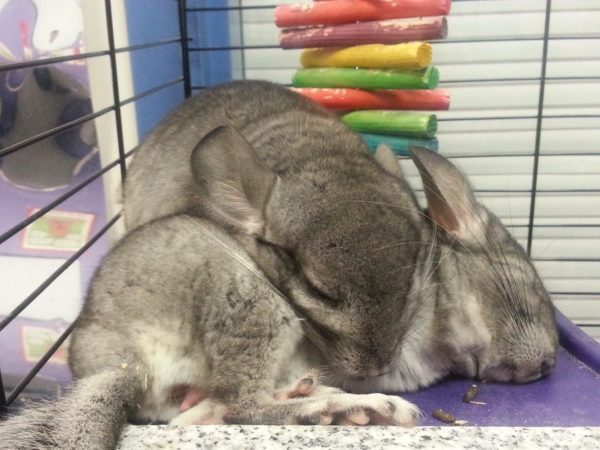
Choosing a cage for keeping a chinchilla
The cage is the personal space of the chinchilla, the place where the animal spends the bulk of its life. Therefore, the owner should carefully and seriously consider the choice of housing for a fluffy pet.
The main criteria for choosing a cell.
Size
The chinchilla’s home should be spacious and high, because mobile and active chinchillas need a lot of space for free movement and jumping.
Strong and durable rod material
The animal will definitely taste the bars of its dwelling. Therefore, preference should be given to cages with metal rods, and not with wooden or plastic ones. Otherwise, the pet may gnaw through the bars and run away from the cage.
Distance between bars
Chinchillas are extremely flexible and can fit through even the smallest gap. To prevent the rodent from slipping out of the cage, the distance between the bars should not exceed one and a half centimeters.
Safe and high quality material
It is unacceptable that the interior and exterior parts of the dwelling be covered with paint or varnish. Once in the body of the animal, these harmful substances can cause severe food poisoning.
For the care and maintenance of chinchillas at home, there are two types of cages: ordinary metal cages and the so-called showcases. Each of them has both advantages and disadvantages.
metal cages
Many owners choose metal cages as they are inexpensive and easy to clean and clean. Among the shortcomings of such a dwelling, poor sound insulation can be noted. When the animals start fussing at night and start running around the cage, they make too loud noise, preventing the owners from sleeping. Another disadvantage is that they scatter the remnants of food and filler in all directions and you will have to carry out daily cleaning of the area near the cage.
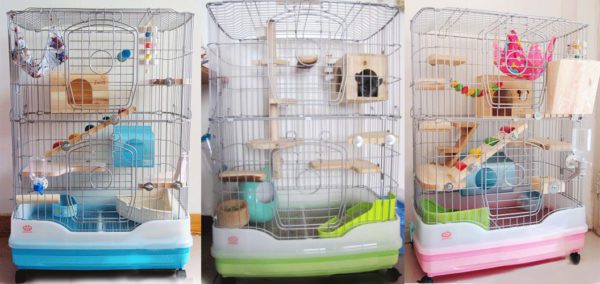
Витрины
Showcases are wooden-framed dwellings with walls made of glass and fine mesh. The indisputable advantages of the showcase is that it hides the noise of pets well, and the garbage from it does not scatter all over the room. The disadvantages of the showcase are that it is inconvenient to clean, the wooden frame absorbs odors, and the walls and floor swell from moisture. Therefore, such housing will have to be changed periodically.
Important: regardless of the type of cage, it must be equipped with several shelves suspended at different levels, which act as simulators for rodents and satisfy their passion for jumping.
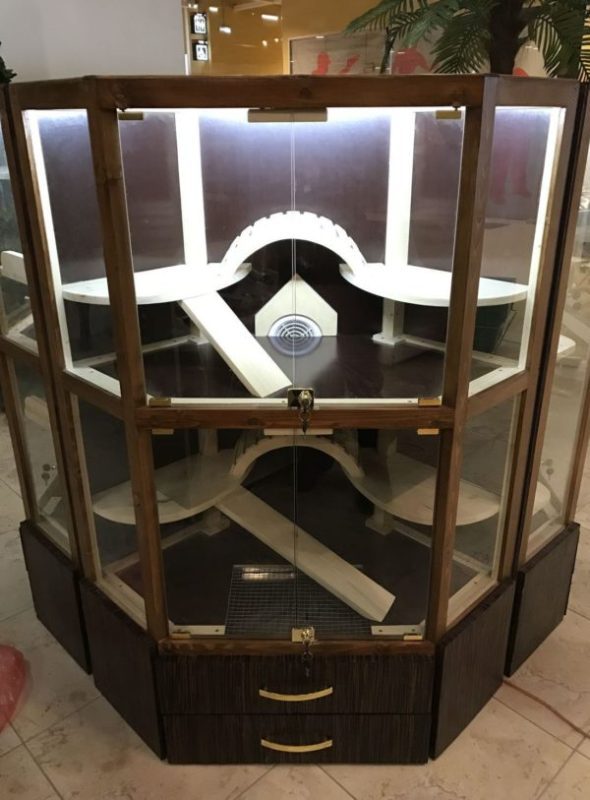
Items and accessories for cage equipment
To make keeping a chinchilla at home convenient and comfortable, another important step for the owner is the correct equipment of the pet’s cage. At the same time, it is important to know what items you need to purchase for a chinchilla, and what accessories you can do without.
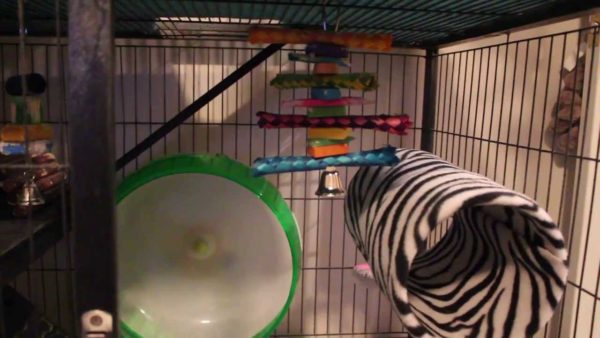
Necessary accessories:
- feeder;
- mpisotro toaka;
- canopy;
- trano fialofana;
- bathtub;
- mineral or salt stone for grinding teeth;
- toilet tray with filler.
Additional items:
- hanging ladders and hammocks;
- labyrinths and tunnels;
- kodiarana mihazakazaka;
- tohatra;
- kilalao
Important: if the cage is small, then you should not clutter up its space with unnecessary items. The animal should move freely around the home, and not cling to unnecessary and useless accessories.
Choice of pet food
The health and well-being of a furry rodent directly depends on a proper and balanced diet. At the same time, it is worth remembering that a chinchilla at home should eat the same food as its wild compatriots in natural habitats.
The main food of the rodent should be high-quality grain or granular mixtures. The composition of feed produced for chinchillas, taking into account the characteristics of their digestive system, includes cereals, dried herbs, seeds and dried fruits. Premium food also contains additional elements and vitamins, vegetable oils and plant extracts (echinacea and alfalfa).
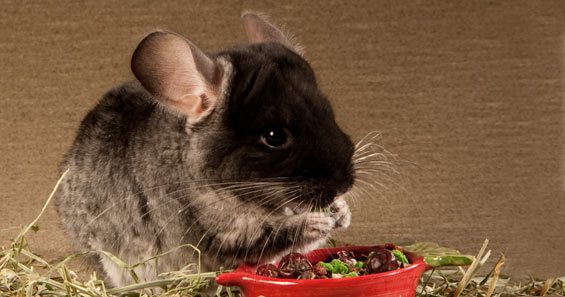
In addition to the main feed in the chinchilla cage, there should always be hay that improves the digestion of animals.
Do not forget about additional foods and treats for pets. Pet chinchillas are given fresh or dried dandelion, plantain, spinach, clover, and lettuce leaves.
As a treat, the animal can sometimes be offered a slice of dried apple or carrot, raisins, seeds and nuts (but not fried).
Give chinchillas and branches of trees, such as apple, linden, willow or birch.
Important: it is strictly forbidden to treat pets with sweet and flour products, fresh vegetables and fruits, or leaves of indoor plants.
Chinchilla care at home
How to care for a chinchilla at home so that the animal lives a long and happy life? Keep his home in order and give your pet the opportunity to take regular sand baths to keep his fur coat clean.
Rodent hair care
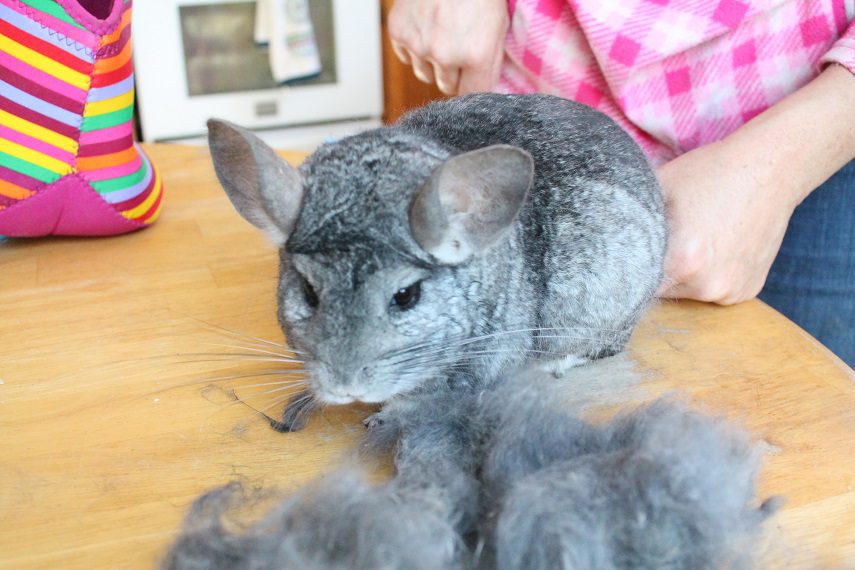
Chinchillas don’t swim in water! Moreover, water procedures are dangerous for the health of a fluffy pet, because animals do not have sebaceous glands, as a result of which their fur coat gets wet through. And this can lead to the fact that the rodent catches a cold and dies of pneumonia.
And so that the luxurious iridescent chinchilla fur always looks well-groomed, sand baths are arranged for the animal.
For this purpose, once or twice a week, a bath filled with special bathing sand is placed in the animal’s cage. After the chinchilla bathes, the sand container should be removed, otherwise the sand will get into the animal’s food or water.
Cage Care Rules
In order for a pet to feel good in its own home, the following rules must be observed:
- surface cleaning of the cage is carried out two to three times a week;
- household chemicals should not be used to clean the rods, the pallet and the walls of the cage;
- general cleaning of the chinchilla’s home should be carried out at least once a month;
- it will be much cleaner in the cage if you pour a special filler into the tray. For this purpose, sawdust, straw or granular wood filler is used. Shreds of newspaper, cellophane and cloth are not suitable as bedding.
How to tame a chinchilla
A chinchilla is not a dog or a cat, so training the animal is useless. These rodents are very independent and independent and you should not expect that the pet will be happy to sit on the hands of the owner and favorably perceive the touch of a person.
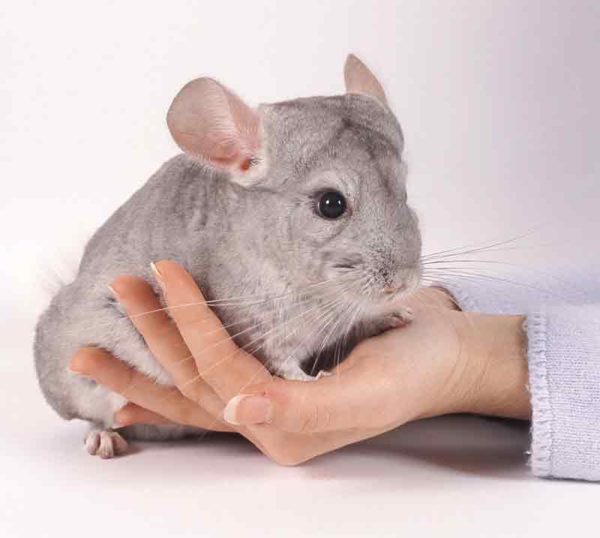
But it is still possible to make friends with a pet, and if the owner wants to win the trust of a shy animal, he will have to be patient and put in a lot of effort for this.
Many owners, having brought a chinchilla home, start stroking and hugging their pet on the first day, and this is their main mistake. After all, do not forget that these animals are very shy and for them the stress is already that they were taken from their usual cage and carried away somewhere. It takes a long time for a chinchilla not only to get used to an unfamiliar environment, but also to the voice and smell of the new owner. Therefore, the first two weeks it is better to minimize communication with the pet and let him get used to the new place.
When the rodent adapts a little to the environment, you can approach his home from time to time and talk to him quietly. You can open the cage and stick your hand in there, giving the animal the opportunity to sniff your palm and even bite lightly. Perhaps the chinchilla will even jump into your arms to get to know you better. If this happens, you should not frighten the animal with a sharp movement and make an attempt to pull it out of the cage, as this will discourage the pet’s desire to approach you for a long time. Let the chinchilla get used to your hands and the fact that you are not a threat to her.
After a while, try to lure your pet out of the cage with his favorite treat. Substitute an open palm with a treat when leaving the dwelling, and let the animal decide for itself whether to climb onto your hand or drag the treat into the cage. With proper patience, the animal will soon get used to you and stop being frightened when you reach out to stroke it or scratch its neck.
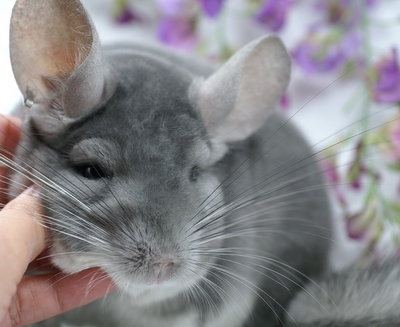
But do not forget that the behavior and character of chinchillas depends on the individuality of the rodent. Therefore, do not despair if, despite all efforts, the animal has not learned to trust you and refuses to go into your arms. Just surround the rodent with attention and love, and perhaps over time it will reciprocate.
Chinchilla and child: is it worth buying a rodent for children
Many parents think that a cute and friendly chinchilla will be the perfect pet for a baby. After all, these animals are not characterized by aggression, they do not bite, and the child will be able to take care of his little pet on his own.
But actually keeping a chinchilla in a house with small children is not such a good idea. Experts generally do not recommend buying a fluffy rodent for children under ten years old.
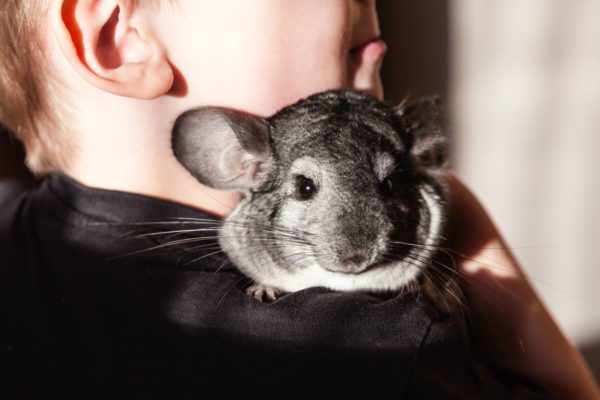
And there are good reasons for this:
- leading a nocturnal lifestyle, the rodent will sleep during the day, so it is unlikely that the child will be interested in watching a constantly sleeping pet;
- Chinchillas are very shy animals. And noisy children’s games in the room where the animal’s cage is located can greatly frighten and injure the pet’s fragile psyche;
- children love to hug animals, carry them in their arms and pick them up by the tail. And most chinchillas cannot stand being touched and picked up. In addition, the baby can strongly squeeze the animal and injure him;
- a small child can leave the chinchilla’s cage open and the animal will take advantage of this to run away and hide in a secluded place, from where it will be very difficult to get it;
- furry rodents should be fed only with special food and treats, and not with food from your own table. And a child, out of ignorance, can accidentally feed a chinchilla with a prohibited product, which will provoke digestive problems in the pet, and in some cases even cause the death of the animal.
Chinchilla in the house: owner reviews
If you can’t decide whether to get this cute rodent, read the reviews of the owners about the care and maintenance of chinchillas at home.
Anastasia: I am very glad that this fluffy little ball of happiness lives in my house.
Chinchilla was given to me for my birthday. And honestly, I never had to regret such a wonderful gift. They say that keeping chinchillas is troublesome, but it is easy and simple for me to take care of such a pet. You don’t need to walk him, there are no problems with feeding either, in general, caring for a chinchilla is a pleasure. And the main plus is that the rodent does not smell at all.
Sergey: never get a chinchilla
Yielded to the requests of his wife and bought a chinchilla. Yes, the rodent is cute and cute, but that’s where its virtues end. From the chinchilla at night there is so much noise that it is impossible to sleep. With us, she gnaws everything – cage bars, shelves, a house and even a feeder, although we bought a special mineral stone for grinding her teeth. Walking the animal around the apartment is a separate issue altogether. If you let the chinchilla out of the cage, consider that the end of the furniture, wires, baseboards and wallpaper has come, because it will gnaw on everything that it can reach.
Elena: these are the most wonderful and delightful animals
A couple of chinchillas, Khoma and Larik, have been living with us for two years now. They are very playful, affectionate and tame, they are happy to go on hands and let themselves be stroked. Caring for them is not difficult and there is practically no smell. And how interesting it is to watch them bathe in the sand. If you decide to get a decorative rodent, then feel free to choose a chinchilla, these are wonderful and amazing pets that will not cause you much trouble in keeping.
Chinchillas do not require special conditions, like some exotic pets. But this does not mean that they do not need care and attention from the owner. The animal will have to devote a lot of time and attention, because by starting a fluffy pet, the owner takes responsibility for the health and well-being of a small animal. And in order for a chinchilla to please you with its well-groomed appearance and activity for many years, it needs to provide a comfortable and happy life.
Video: care and maintenance of a chinchilla at home
Chinchilla care at home
3.6 (71%) 20 vato



